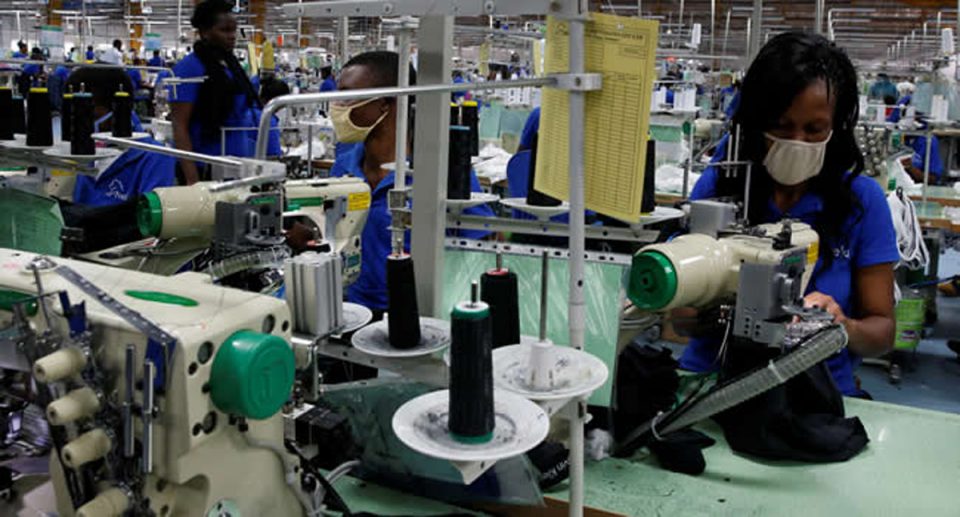Manufacturing sector growth dropped by 24.7% in 2022 – Report
Manufacturing growth in 2022 slowed by 24.7 per cent to 6.93 per cent, compared to 31.66 per cent in 2021, a new report by the National Bureau of Statistics has shown.
The nominal Gross Domestic Product of the manufacturing sector in the last quarter of fell by 16.6 per cent from 25.52 recorded in 2021 to 8.86 in 2022, on the back of the challenging business environment in the country.
The Chief Executive Officer of the Centre for the Promotion of Private Enterprise, Dr Muda Yusuf, said that the operating environment had remained very bad and challenging for many of the productive sectors of the economy.
“The combined forces of high energy costs and inflationary pressure had interplayed to weaken production for some of the major players in the economy,” he noted.
The Manufacturing sector comprises thirteen activities: oil refining; cement; food, beverages and tobacco; textile, apparel and footwear.
Other subsectors in the manufacturing sector are wood and wood products; pulp paper and paper products; chemical and pharmaceutical products; non-metallic products, plastic and rubber products; electrical and electronic; basic metal and iron and steel; motor vehicles and assembly; and other manufacturing.
The NBS stated that the contribution of manufacturing to nominal GDP in the fourth quarter of 2022 was 13.49 per cent, lower than the figure recorded in the corresponding period of the prior year at 14.28 per cent and lower than the third quarter of 2022 at 13.75 per cent.
The total contribution of the sector to the GDP last year in nominal terms stood at 13.80 per cent.
Real GDP growth in the manufacturing sector was 2.83 per cent (year-on-year), higher than the same quarter of 2021 and higher than the preceding quarter by 0.55 percentage points and 4.74 percentage points respectively.
The growth rate of the sector on a quarter-on-quarter basis stood at 8.57 per cent.
Overall, the growth rate of manufacturing stood at 2.45 per cent while the real contribution to GDP in the fourth quarter was 8.40 per cent, lower than the 8.46 per cent recorded in the same period of the preceding year and lower than the 8.59 per cent recorded in the third quarter of 2022.
Commenting further on factors that affected the performance of the manufacturing sector last year, the CPPE boss said, “All the usual problems are still there. In some cases, those challenges have become more profound. For instance, the FX challenge has led many companies to cut down on their capacity, and it has led to a very high cost of products.
“We had energy costs, which was one of the biggest challenges we had last year. Of course, we had high inflation, which weakens purchasing power. This contributed to the high cost of production. It brought down sales of many organisations. It affected the SMEs.”
In the same vein, an economic expert at the Pan-Atlantic University, Lagos, Professor Olalekan Aworinde, cited difficulty in accessing raw materials as well as high import tariffs as contributory factors that weakened the performance of the manufacturing sector during the period in review.
Aworinde said, “It is not surprising that manufacturing GDP for 2021 is higher than that of 2022. There is a fall in manufacturing output. The infrastructure is not there. On the other hand, is accessibility to raw materials.
“When you do not have access to raw materials that is a huge problem. Do not forget that these manufacturing companies, the majority of these import their products into the domestic environment. That comes with an increase in the cost of production; and, as a result of this, there is likely to be a fall in the number of goods that are produced.”
On his part, a professor of economics at Olabisi Onabanjo University, Sheriffdeen Tella, noted that much of the 2022 economic environment was characterised by skyrocketing inflation, which left a devastating effect on manufacturers.
He said, “Prices have gone up for production, for raw materials. So, many companies have also dropped their output, and that is expected.”
In a statement issued recently, the Lagos Chamber of Commerce and Industry called on the Federal Government to ensure consistency in policymaking in order to protect private sector investments.
Also, the Manufacturers Association of Nigeria in a recent report said the fourth quarter of 2022 was adversely affected by an escalation in the Consumer Price Index, continuous erosion in the value of the naira and difficulty in accessing forex, high cost of energy, persisting insecurity and the consequences of lingering Russian-Ukrainian war.
“These issues among others are principally responsible for the difficulties in the operating environment and its declining implication on manufacturing activities in the country during the quarter under review,” the report partly read.




